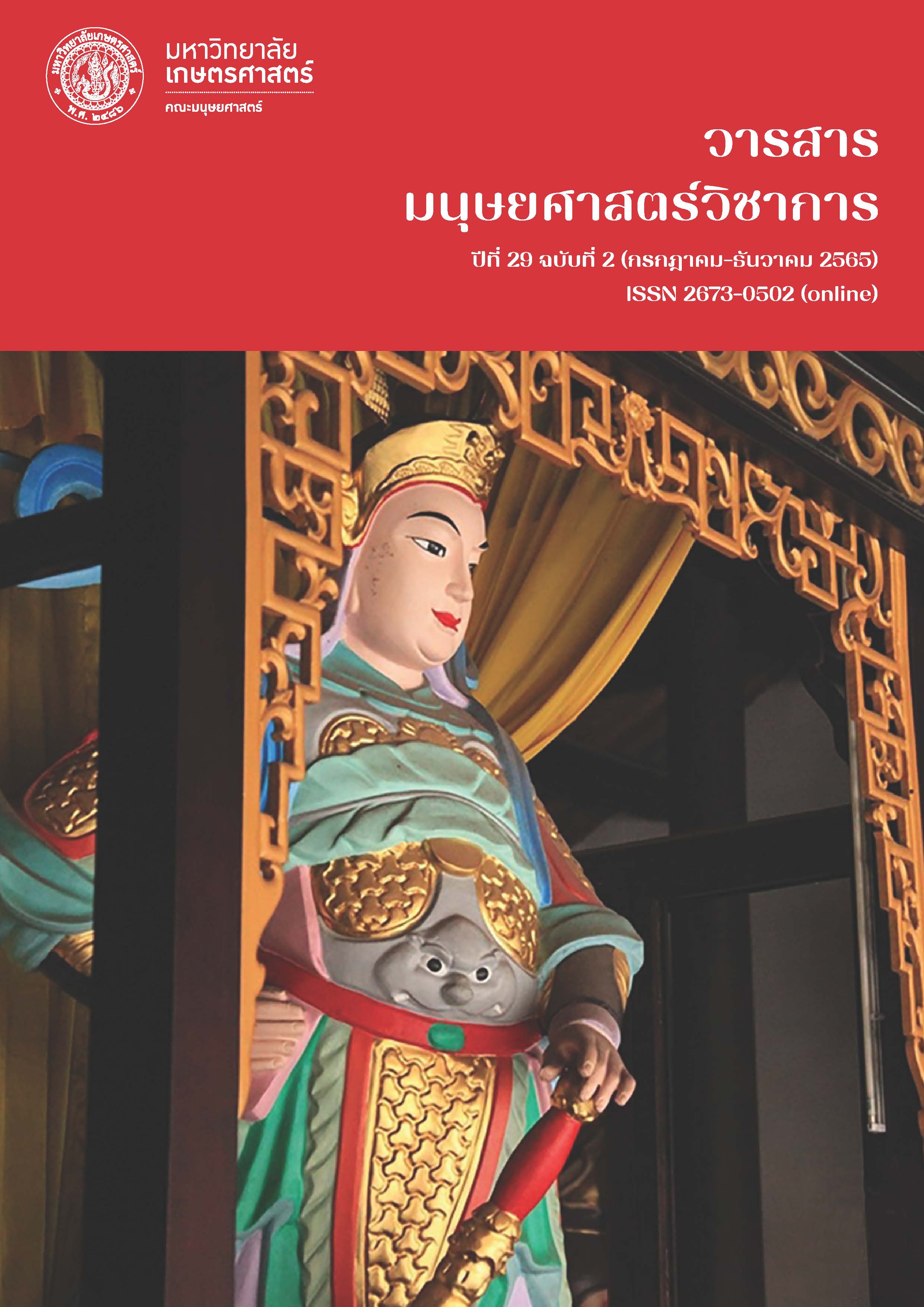Arrangement Concept of Wei-tuo in Chinese and Vietnamese Mahayana Temples in Bangkok
Main Article Content
Abstract
Wei-tuo or Veda Bodhisattava is a significant sculpture normally found in Chinese and Vietnamese Mahayana temples in Bangkok. It is portrayed as a young male god dressed in Chinese armor and holding a club. The god’s arrangements inside these temples of two sects in Bangkok are various. Thus, this article is aimed to categorize the arrangements of Wei-tuo found in those temples, and also to study the factors having impacts on these arrangements.
According to the research, the arrangements can be categorized into 3 types: 1) he was placed in any subsidiary position inside the principal building, but not on the main axis; 2) he was placed inside the principal building, on the main axis and turned his face towards the principal Buddha image; 3) facing the principal Buddha image, he was placed on the main axis, either inside the hall of Heavenly Kings or the area in front of the principal building.
As for the factors which have an impact on these arrangements, those found in Chinse Mahayana temples are related to the practices in China, which are relevant to the iconographical characteristics of Wei-tuo (a mixture of characteristics from Skandha and Weitianjiangjun). As for Vietnamese Mahayana temples, the arrangements of Wei-tuo were influenced by those found in the former, because the placement of Wei-tuo inside temple is not popular in the Vietnamese Buddhist art. The factors leading this practice to be popular among Bangkok Vietnamese Mahayana temples were the increasing amounts of Chinese patrons since the reign of King Rama III and the decrease of Vietnamese monks in Vietnamese Mahayana sects.
Article Details

This work is licensed under a Creative Commons Attribution-NonCommercial-NoDerivatives 4.0 International License.
References
ประวัติวัดกุศลสมาคร. (2550). กรุงเทพฯ: วัดกุศลสมาคร.
พระคณานัมสมณาจารย์ (โผเรียน เป้า). (2535). ที่ระลึกงานฉลองสมณศักดิ์เป็นพระราชาคณะ ที่พระคณานัมสมณาจารย์ (โผเรียน เป้า) เจ้าอาวาสวัดชัยภูมิการาม กรุงเทพมหานคร 16 พฤษภาคม 2535. กรุงเทพฯ: วัดชัยภูมิการาม.
พระครูคณานัมสมณาจารย์ (โผเรียน เป้า). (2507). ประวัติพระสงฆ์อนัมนิกายในราชอาณาจักรไทยและประวัติความเป็นมาของชนเชื้อชาติญวนในสมัยต้นรัตนโกสินทร์. พระนคร: ม.ป.พ.
อุภัยฉลอง. (2543). กรุงเทพฯ: ประชาชน.
Kosittanakiat, Tiwaree. (2005). The Adaptation of Annam-Nikai in Bangkok (Thesis for Master of Arts Program in Thai Studies). Chulalongkorn University, Bangkok.
Kumar, Bachchan. (2001). The Buddhist Art: Vietnamese Perspectives. Delhi: B.R. Publishing Corporation.
Li, Xinjie. (2012). Weituo: a Protective Deity in Chinese Buddhism and Chinese Art (Dissertation for Master of Arts). University of Macau, Macau.
Prip-Moller, Johannes. (1967). Chinese Buddhist Monasteries. Hong Kong: Hong Kong University Press.
Tay Phuong Pagoda. (2022). Retrieved January 20, 2022, from https://www.orientalarchitecture.com/sid/
/vietnam/hanoi/tay-phuong-pagoda.
丁清玲, 2011, 南皮“石金刚”艺术考察报告》, 河北师范大学硕士学位论文 Ding Qingling. (2011). Nanpi Shijingang Yishu Kaocha Baogao (Dissertation for Master Degree). Hebei Normal University,Hebei. (รายงานการสำรวจด้านศิลปกรรม “วัชรปาณีศิลา” เมืองหนานผี).
金光明经 Suvarṇaprabhāsottamasūtra. (2022). Retrieved January 14, 2022, from https://cbetaonline.dila.edu.tw/search/?q=%E0%B9%88%E9%87%91%E5%85%89%E6%98%8E&lang=zh.


